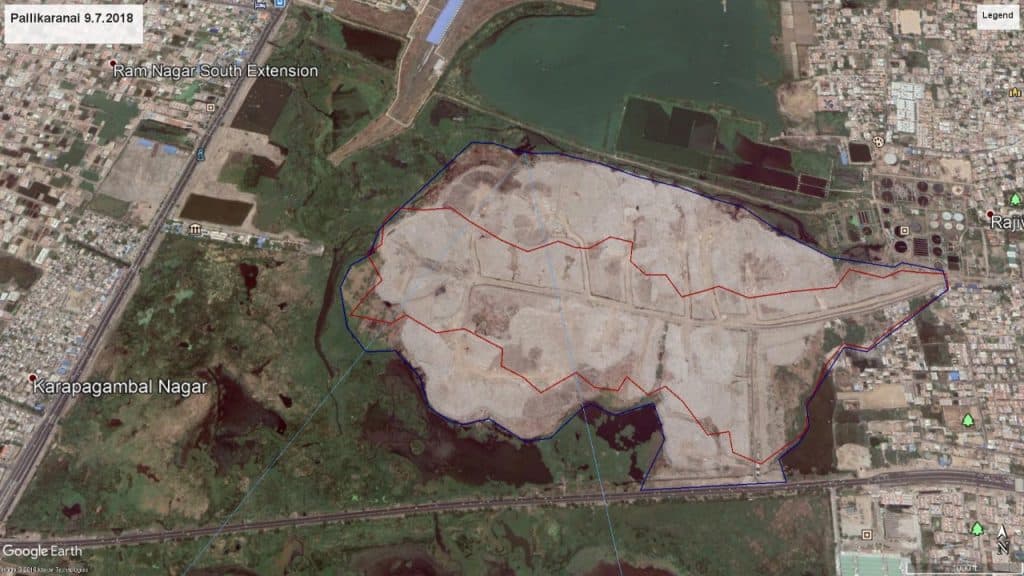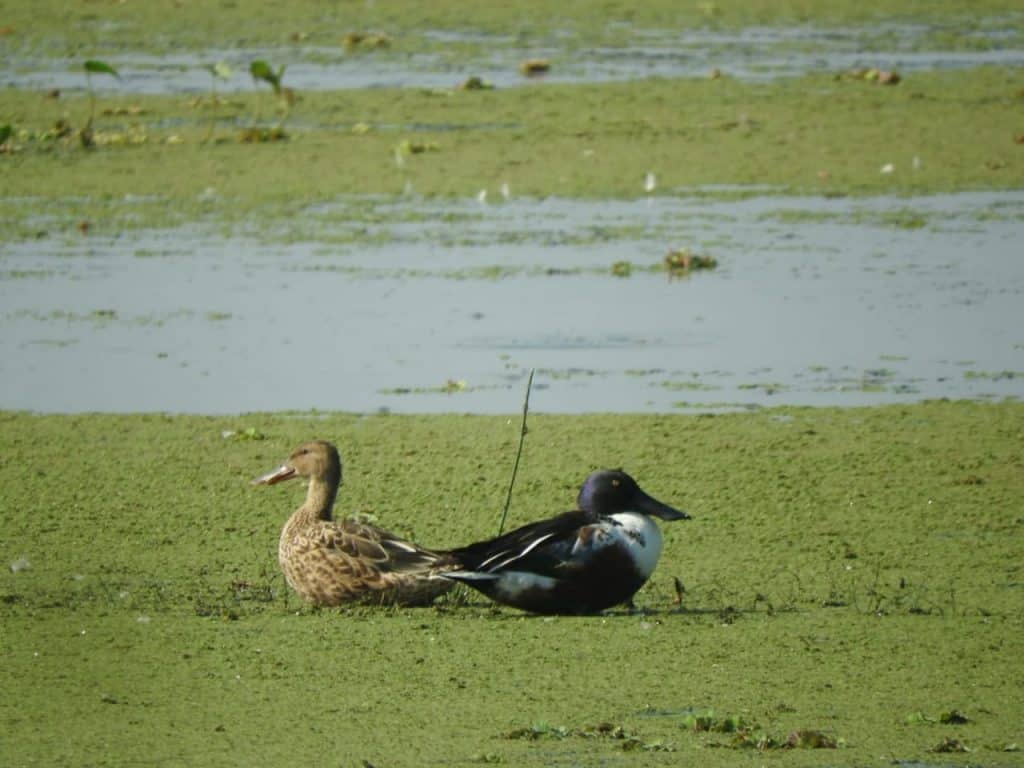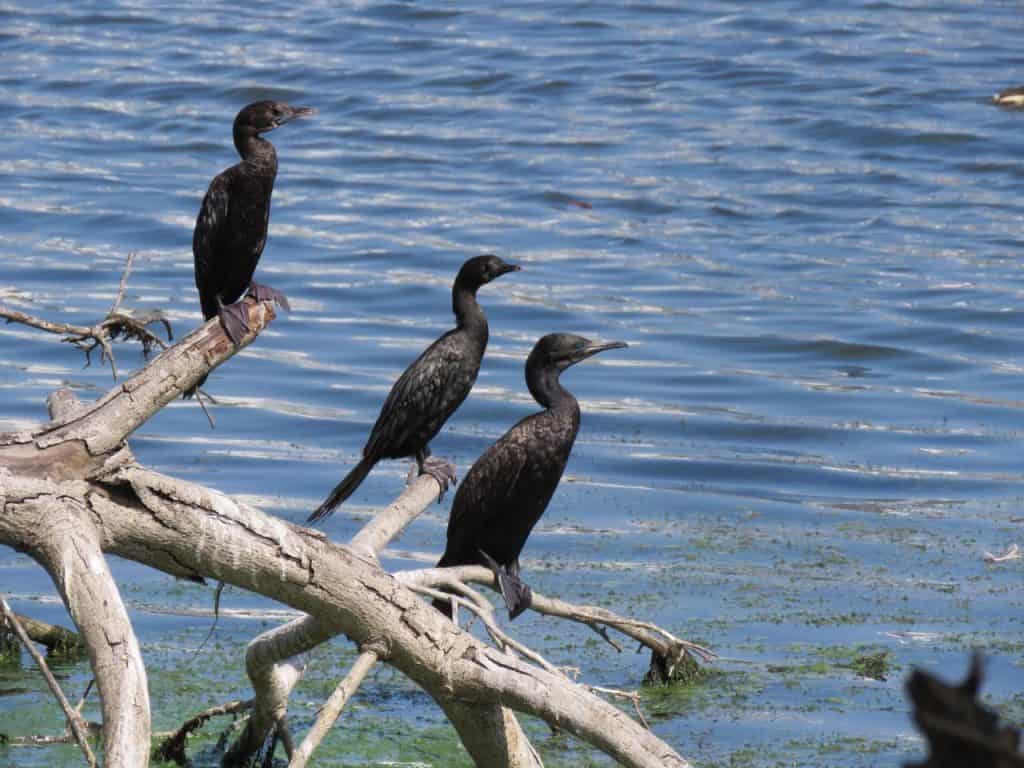In 1987, an MTC bus plying on the muddy Pallavaram–Thoraipakkam 200 Feet Radial Road would see passengers reaching out for their handkerchiefs or the corner of their saris to cover their noses. Today, the road has been widened and many educational institutions and IT companies have mushroomed around it. However, the stench along the stretch of the Pallikaranai marshland remains unbearable. In fact, it is worse than in 1987.
Destruction of wetlands: The Pallikaranai story
The degradation of this freshwater marshland started in 1980 when the Greater Chennai Corporation started using the ecologically-rich wetland to dump solid waste. The marshland has not been spared by anyone including religious organisations, central and state-owned entities and educational institutions. The list of encroachers goes on.
“From 13,500 acres in 1972, the Pallikaranai marshland has shrunk to 1,500 acres. At least 1,000 residential properties, and government bodies such as MRTS Perungudi and National Institute of Ocean Technology (NIOT) have encroached upon the marshland,” said Harris Sultan, an environmental activist.

The satellite image from 16 December 2001 shows the 140-acre dump yard in Pallikaranai marsh. Credits: Harris Sultan

Taken on 9th July 2018, the image shows how the dump yard has extended to 268 acres. Credits: Harris Sultan
In 2018, the State Environment and Forest Department received funds worth Rs 165.68 cr for eco-restoration of the marshland. Despite the government’s efforts to conserve the Pallikaranai marshland there has been no positive change.
Meanwhile, the Chennai Corporation is set to introduce biomining at the Pallikaranai marshland. “The state government has granted Rs 400 crore for the biomining of Pallikaranai. The project will start in three months,” said G Prakash, Commissioner, Greater Chennai Corporation. But how will it work if the civic body continues to dump waste at the marshland?
“We will earmark a part of the marshland to dump waste. We have taken a slew of measures to segregate waste at source and process it in micro composting centres and resource recovery facilities. In two years, we can completely cut down the waste that goes to the marsh, after which the earmarked space at the dumping ground will be biomined too,” explained Prakash. However, only time will tell if the strategy can change the future of the marsh.
A long-term solution
With the value of land skyrocketing in Chennai, encroachment on the marshland is expected to continue despite restoration activities. So how can this ecologically-rich space within the city limits be conserved? Would including the wetland in international conventions change its destiny? Yes, say activists.
The Pallikaranai marshland meets the criteria to be included in the Ramsar Convention, an international treaty for the conservation and sustainable usage of wetlands.
“The Pallikaranai marshland has all the characteristics of a Ramsar site. The Ramsar Convention implies wise use of wetlands, and encourages sustainable development within the ecological character,” added Harris Sultan.
As wetlands around the world are fast disappearing, the Ramsar Convention ensures a protective lens for these ecologically rich spaces. A Ramsar site is internationally watched and that is expected reduce the magnitude of ill-treatment to the wetland.
Pallikaranai for Ramsar
Citizen Matters Chennai accessed the Tamil Nadu Forest Department’s application, which is yet to be submitted, to the Ramsar Convention. Despite multiple efforts, the forest department officials refused to cite the reason for delay. However, a source close to the department said that the process is being delayed to indulge in land grabbing. “The state government is buying time to encroach on as much as land possible from the wetland. The wetland is situated in the core area of the city, where development is booming,” the source added.
One of the last remaining wetlands of South India, Pallikaranai meets seven out of nine criteria enlisted by the Ramsar Convention. Any wetland that fulfills even one criterion deserves to be a Ramsar site. Here are the unique factors of the Pallikaranai marshland as mentioned in the document:
- It should be a unique example of a natural or near-natural wetland type. The Pallikaranai wetland plays a major role in the natural control, amelioration or prevention of flooding. Adjoining wetlands around the Pallikaranai marsh discharge water into it either as an overflow or through the drainage network. There are nearly 30 wetlands (both big and small) located around the Pallikaranai marshland which release surplus water into it during the rainy season.
- The Pallikaranai marshland supports 18 internationally-listed endangered species of birds such as Black-tailed Godwit, Great Knot, Painted Stork etc. “There is a positive trend. Despite constraints, new species of migratory birds keep visiting the marsh every year due to food availability and security,” said K.V.R.K. Thirunaranan, a bird watcher and founder of The Nature Trust.
- About 114 species of plants have been recorded in the wetland including 29 species of grass. The marsh is home to 164 species of birds, 10 species of mammals, 21 species of reptiles, 50 species of fishes, nine species of amphibians and mollusks (snails and clams) each, five species of crustaceans, and seven species of butterflies.
- According to the Ramsar Convention, a wetland should be considered internationally important if it supports a plant and/or an animal species at a critical stage in their life cycles, or provides refuge during adverse conditions. Birds like spot-billed duck, large whistling duck, spot-billed pelican, back-winged stilt, purple moorhen, little grebe, pheasant-tailed jacana etc. breed at the Pallikaranai marsh.
- According to the Ramsar Convention criteria list, a wetland should be considered internationally important if it regularly supports 20,000 or more waterbirds. As per the data compiled by The Nature Trust, the Pallikaranai marsh, on an average, supports nearly 40,000 birds at a time during the migratory season and over 5,000 birds during the non- migratory season (summer months).
- Between March and June, the marshland has recorded large numbers (up to 1,500) of local migratory large whistling duck, a rarity in southern India. In addition, records of spot-billed duck (maximum up to 3,500 birds) and lesser whistling duck (up to 1,500 birds) are important features that make the Pallikaranai marsh a wetland of global importance.
- As many as 50 species of fishes have been recorded from the Pallikaranai marsh, a large number of which are native, while some were introduced.
Can the Ramsar tag save Pallikaranai?
The Ramsar designation declares a wetland as internationally important and helps in spreading public awareness around it. A Ramsar site is always under the scrutiny of international policy makers, ensuring its protection. For example, the East Kolkata Wetlands became a Ramsar site on August 19, 2009. Spanning across 125 sq km, it is home to several salt marshes, salt meadows, sewage farms and settling ponds. Although the wetland is still being encroached on by public and private bodies, there is strong opposition from the community.
“A mere Ramsar tag will not conserve a wetland. However, it definitely triggers citizen participation in conserving such spaces of high ecological importance. Respective state governments should also stop construction activities on Ramsar sites,” said S. M. Ghosh, an environmentalist, who has started a change.org petition to save the East Kolkata Wetlands.
In Chennai, where except for a few environmentalists, policy makers and locals, the majority of citizens are oblivious of the significance of the Pallikaranai marshland, a Ramsar designation could be a ray of hope.

